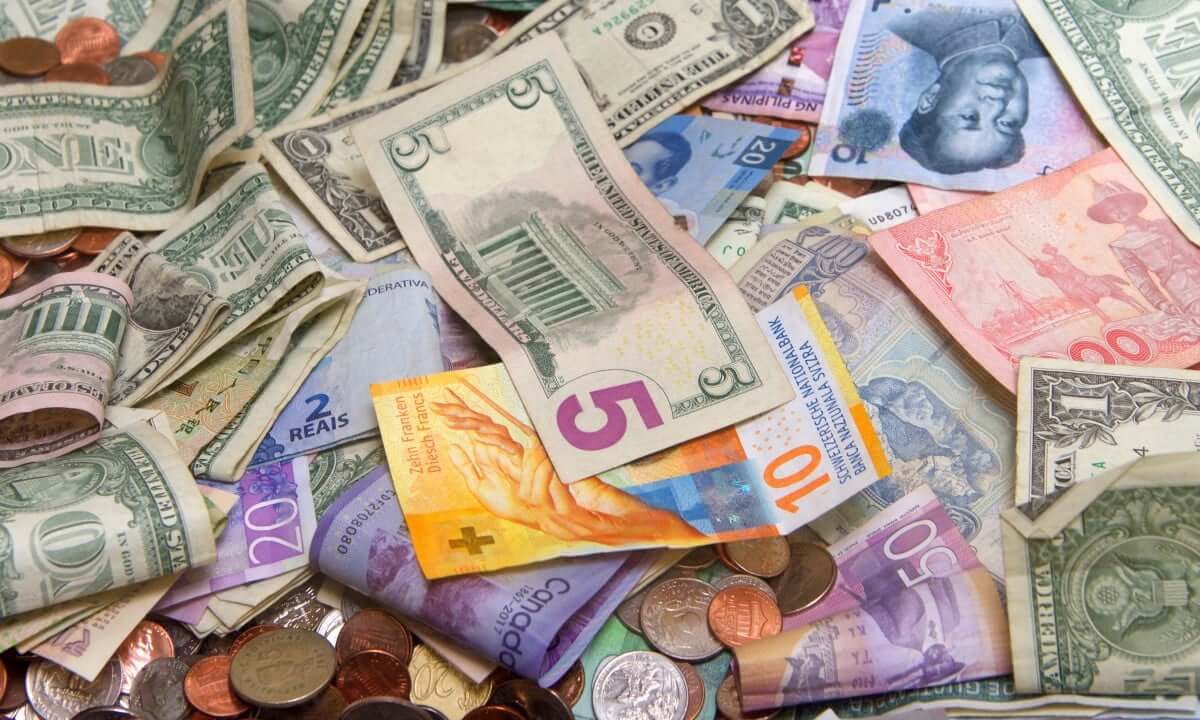
The U.S. Dollar Hit A Seven-Month Low. What About The Yen?
The U.S. dollar traded in the red on Monday. The currency plunged to a seven-month low versus a basket of six major peers in Asian trade. Investors focused on the Japanese yen, expecting the Bank of Japan to change its yield control policy further.
However, the greenback firmed in European trading. It managed to recover some losses against the British Pound. The latter shaved off 0.4% at $1.2185 at last.
Meanwhile, the euro skyrocketed to a nine-month high of $1.0874 in early trade. But the common currency plummeted to $1.0861 later, dropping by 0.16%. At the same time, the Australian dollar surged over the key $0.7000 level for the first time since August. Still, the currency retreated back to $0.6959 soon afterward.
Thanks also to the soaring Pound and yen, the dollar index collapsed to a seven-month low today, exchanging hands at 101.77. The currency started its selloff last week after fresh data showed that U.S. consumer prices dropped for the first time in more than 2-1/2 years last month.
MUFG analysts noted that every G10 currency jumped versus the greenback last week as the U.S. inflation data for December supported the risk-on mood on the markets. The report confirmed that inflation continues to drop. This news reinforces the prospect of the Federal Reserve stopping its tightening cycle. However, that may occur after the March FOMC meeting. The agency’s aggressive rate hikes bolstered the dollar index, supporting its 8% rally last year.
Investors are currently pricing in a 91% chance of a 25-basis-point rise at the Fed’s next meeting. The central bank will announce its policy decision in February. There is also a 9% chance of a 50-bp increase.
How Is The Japanese Yen Faring?
The greenback tumbled to a more than seven-month low against the yen in early trading on Monday. However, the currency managed to rebound. It exchanged hands at 128.35 yen, climbing up by 0.4%.
Traders speculate whether the Bank of Japan will make further tweaks to its policy at its meeting this week. Thus far, the bank has maintained its ultra-easy interest rates despite soaring inflation. Ray Attrill, the head of F.X. strategy at National Australia Bank (NAB), noted that the forex markets would be focused on Wednesday, and the bank’s decision will probably define the week for G10 currencies.
He also added that the BOJ has yet to get the luxury of time. It will only be able to try to assess the situation after Q2. Because in that case, Haruhiko Kuroda would finish his term without making any further changes. BOJ Governor Kuroda will step down in April, and he has to make a decision until then.
Economists and market players have been pressing for the BOJ to change its ultra-easy monetary policy. The latter caused the yield on Japan’s benchmark 10-year government bonds to cross the central bank’s new ceiling for the last two sessions. But the bank stood firm thus far.
What about the E.M. currencies?
Most EM Asian currencies and stocks traded in the green on Monday as the dollar plunged. The Indonesian rupiah gained the most, skyrocketing to its highest level since September 20, 2022. The currency added the 1% gains from the early trade.
At the same time, Thailand’s baht surged forward for a second consecutive day, jumping to its highest level since March 2022 after rallying by 0.9% earlier.
However, Indonesia saw its commodity trade surplus narrow more than expected last month. The country experienced an export boom in 2022 due to high commodity prices. But according to new data from the statistics bureau, export growth slowed while imports weakened, as well.
Market players will focus on various monetary policy meetings due this week. The central bank of Indonesia, Southeast Asia’s largest economy, is one of the banks planning to announce a new course.
On Monday, Singapore’s dollar edged up by 0.1%. The Malaysian ringgit also gained 0.6%, and the Philippine peso jumped by 0.8%. On the other hand, the Chinese yuan largely remained the same. Still, Shanghai stocks increased after health officials announced that coronavirus infections in the region likely peaked. Most shared across the region continued to surge forward. MSCI’s broadest index of Asia-Pacific stocks outside Japan added 0.9%.
Shares in the Philippines gained the most, soaring by 2%, and equities in Taiwan, South Korea, and Thailand jumped between 0.4% and 0.7%.




